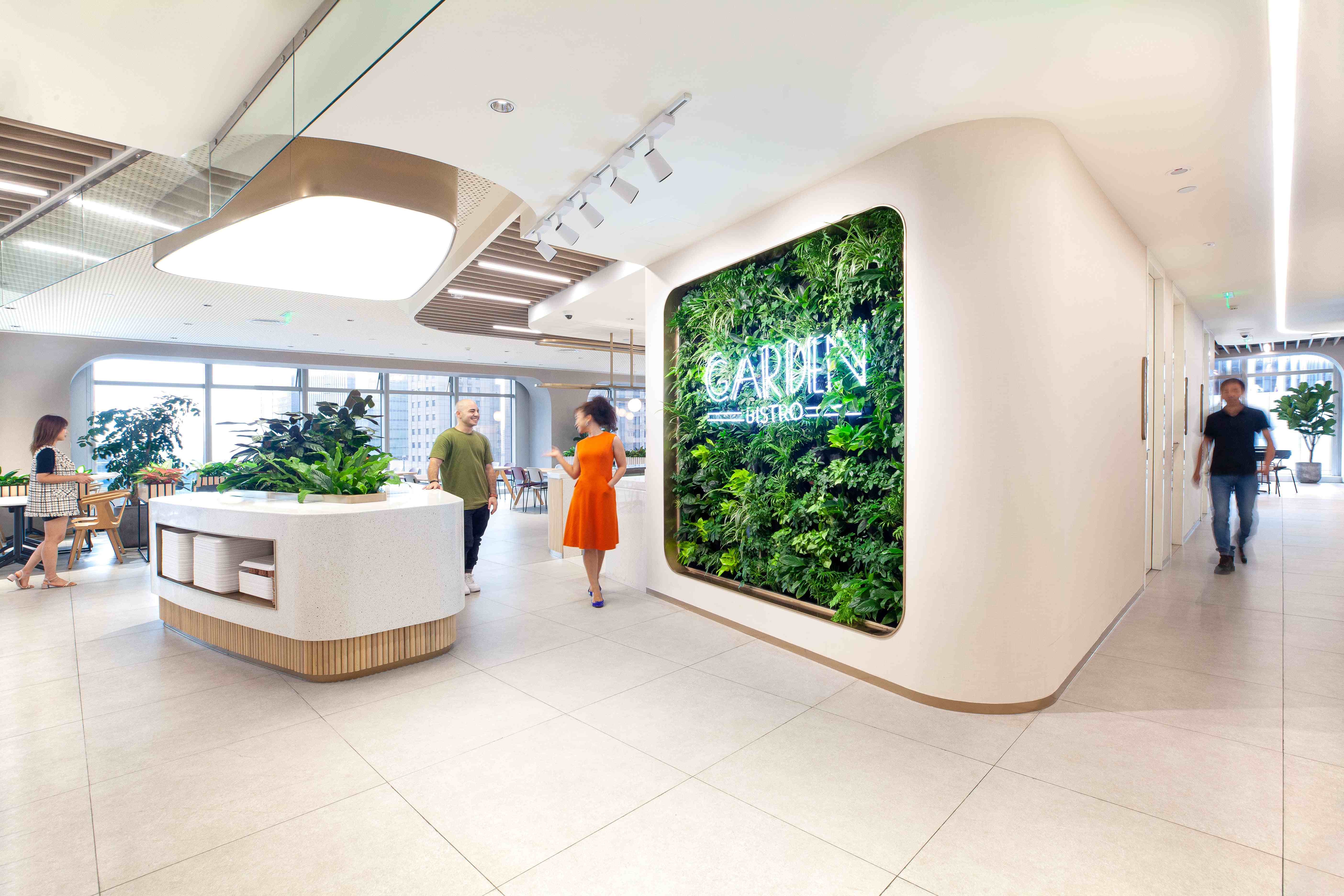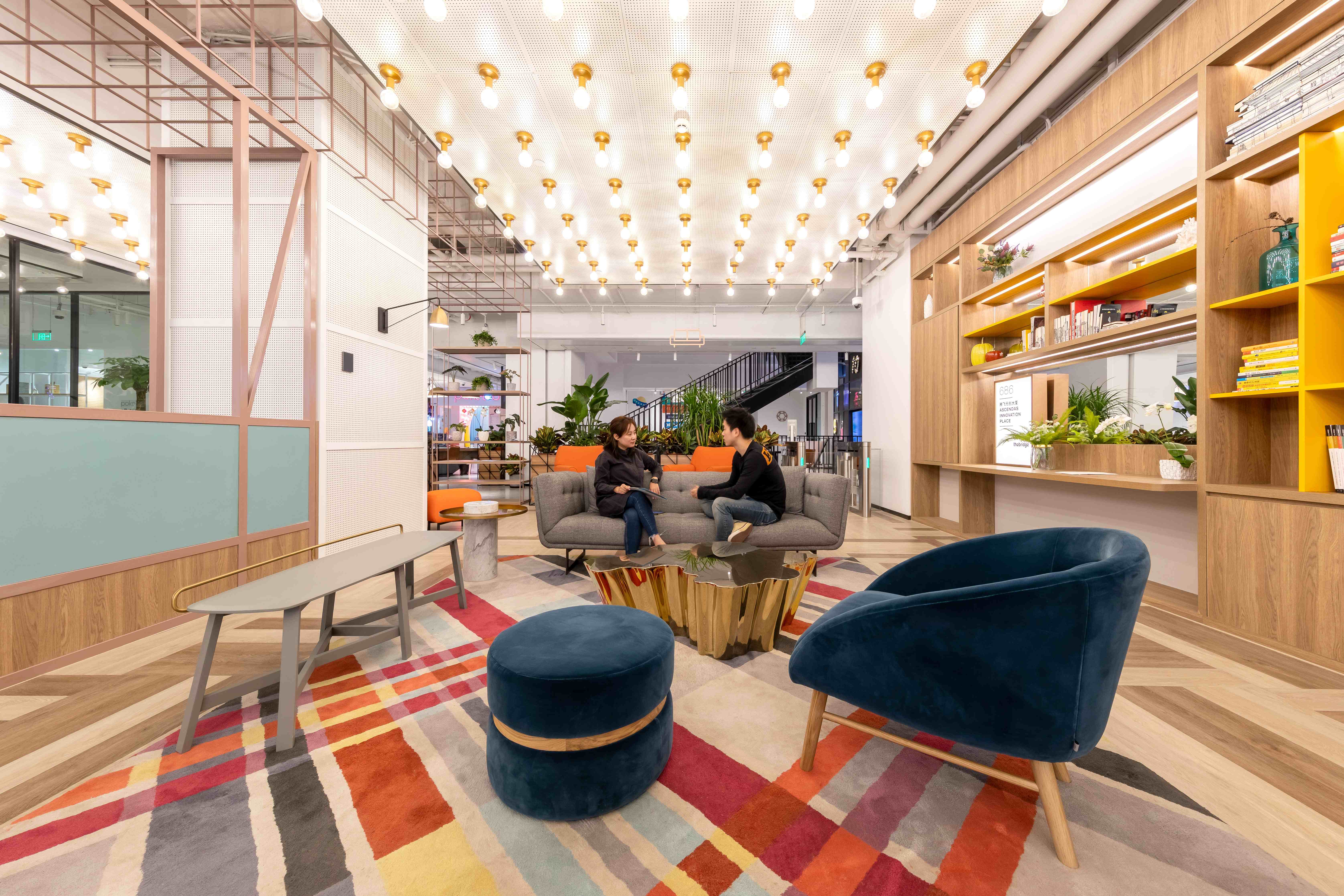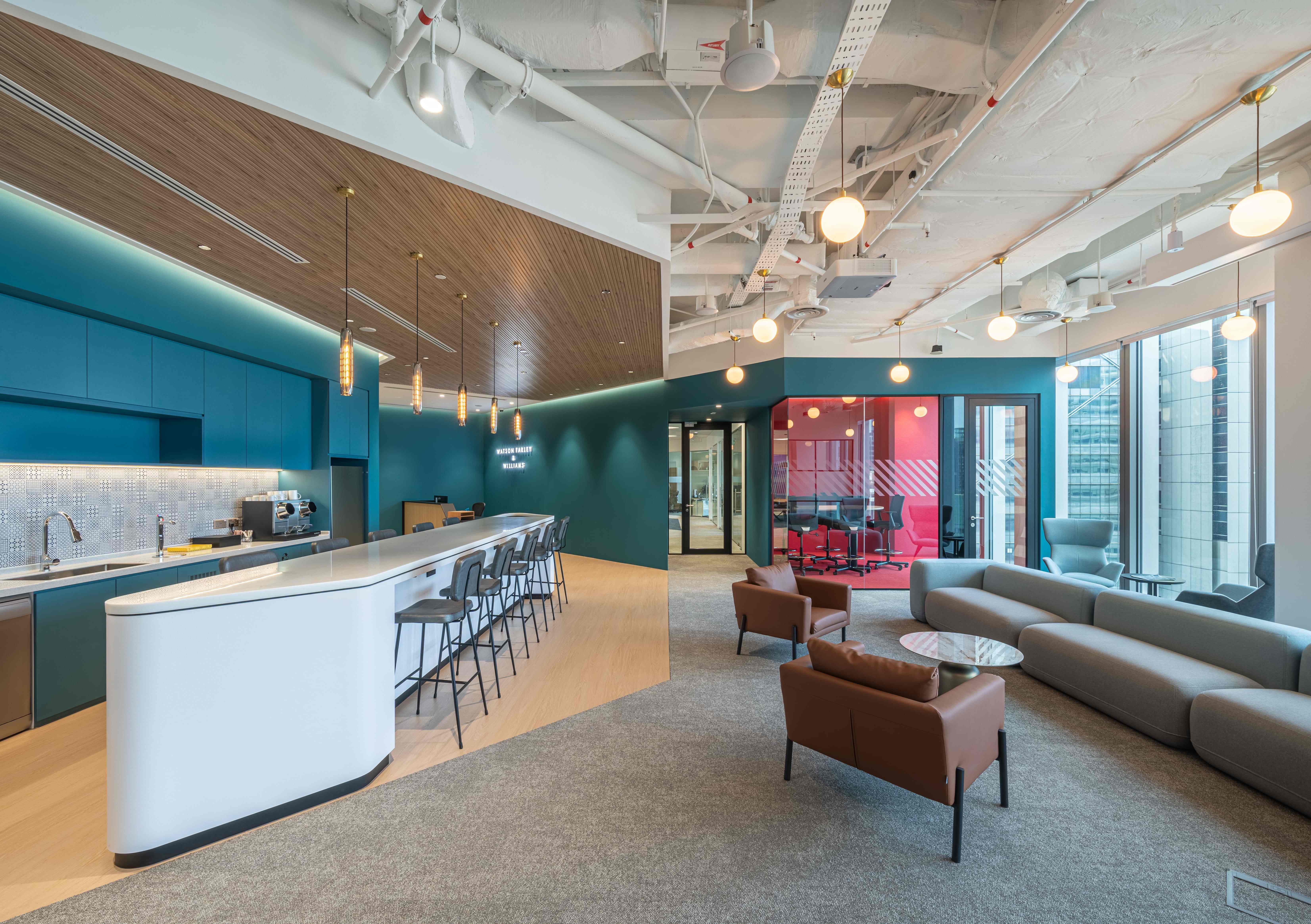Crafting New Narratives in Office Design
The emergence of global teams and the widespread adoption of hybrid work models are breaking down geographical barriers in the modern workplace. For employees, the
office is no longer a destination for daily tasks. It is a dynamic arena where a significant portion of one's life unfolds, thereby prompting physical and mental well-being to take centre stage as people have begun to realise its significance.
In today's continuously changing world of work, the concept of office design goes beyond desks and deadlines. Businesses now focus on creating unique work environments and workplace experiences that allow everyone to excel, individually and as an organisation.
The evolving
trends in office design space are reflecting this shift quite clearly. Keep reading to learn more about this shift in focus towards experience and new workplace trends. We emphasise the need to recognise the physical office space as a vital component in promoting collaboration and supporting an employee’s well-being.

The future office is all about creating environments that are inspiring, flexible, and supportive of employee well-being, both physical and mental. By embracing these trends, companies can foster a thriving workplace that attracts and retains top talent, ultimately setting themselves up for success in the new world of work.
Changing Realities Of Office Designs
The monumental shift in the perception of office spaces reflects a substantial departure from conventional views. Once considered primarily functional spaces where work tasks were executed, offices are now regarded as dynamic hubs. The latest trends in office designs are promoting innovation, collaboration, and employee well-being like never before.
Previously synonymous with structured cubicles and hierarchical layouts, today's offices emphasise flexibility and create collaborative ecosystems. The new-found approach recognises the importance of a holistic work environment that accommodates diverse work styles and encourages social interaction. And it bodes well for the brand and the workforce, as organisations with content and satisfied employees
beat their competitors by 20%.
Common Challenges Faced By Organisations
Organisations grappled with daunting challenges that influenced their ability to deliver consistent output. Let’s look at them in detail.
-
Enhancing wellness by creating a safe and comfortable work environment
The demand for safe and comfortable workspaces became a critical factor for top talent. Employees sought environments that prioritise well-being and mitigate the stress associated with the uncertainties of the new normal. This not only meant pivoting the office design towards a wellness-centered approach but also making a substantial shift towards sustainability. A green and clean office environment is rapidly becoming a talent magnet as more employees seek to work with environmentally responsible brands. As the nature of work continues to evolve, organisations adapting to the latest office designs are better positioned to attract and retain top-tier talent in a competitive job market.

-
Open floor plans for accommodating diverse working styles
The emphasis on accommodating diverse working styles became a key consideration for talent-seeking inclusive work environments. Individuals with specific needs sought organisations that valued diversity and inclusivity. Therefore, organisations are gradually stepping away from hierarchical layouts and introducing more open spaces for work. This provides the employees with autonomy and choice to work the way they want, a highly desirable attribute of a workplace for any employee.

-
Tech integration for optimising collaboration and productivity
Top talent increasingly valued
workplaces that enabled collaboration, creativity, and face-to-face interactions. However, the geographical dispersion of teams made face-to-face interactions almost impossible. Therefore, the need for tech integration to bridge collaborative, functional, and creative gaps saw a rising requirement. Leading organisations today are heavily reliant on tech-driven workplace experiences that ensure maximum collaboration and productivity.

Impact Of Reimagined Workplace Design On Employee
As a new era of workplace design trends dawns upon top organisations, brands are rapidly shifting focus to make the workplace a healthier and happier place for their employees. The need to craft a new narrative for your brand becomes crucial to creating a strong connection between the organisation and its people. This is achieved through a dynamic, experiential, and agile workplace, like WFW’s.
The
reimagined workspace at Watson Farley & Williams, an international law firm, highlights a commitment to diversity and inclusion, crucial elements for a global legal practice. Space Matrix’s latest office interior design strategy transformed the traditional office into a dynamic destination that prioritises the employee experience and promotes inclusivity.
The modern aesthetic is further boosted by purpose-driven areas encouraging knowledge-sharing and mentorship. The hallmark features of our work for WFW include flexible work points for town halls, an open-plan client lounge, boardrooms with operable walls, and acoustic panels for private client meetings.

“Our innovative and latest office interior design strategy seamlessly integrates informal conversation areas, breakaway spaces, and cosy seating clusters. It promotes a harmonious blend of productivity, creativity, and collaboration for WFW's diverse, multigenerational workforce.” - Space Matrix Team
The Future Of Work And The Workplace
The future of work and the workplace will have employee-centric considerations at the forefront. Next, companies will increasingly
emphasise sustainability in the latest office design after recognising its multifaceted benefits. And how can we miss the sustainability aspect? Sustainable resources will continue contributing to environmental conservation and remain critical in building a positive brand image.
Furthermore, businesses will perceive the latest office interior design trends through the lens of employees to prioritise a people-centric approach. The workplace is thus evolving into a strategic tool for brand identification. It aligns organisational values with the latest office design to create a distinctive brand identity. The shift highlights that the workplace is dynamic, influencing talent attraction and employee satisfaction.
Ready to take the leap and craft a new narrative for your workspace?
Contact Our Workplace Experts!

 The future office is all about creating environments that are inspiring, flexible, and supportive of employee well-being, both physical and mental. By embracing these trends, companies can foster a thriving workplace that attracts and retains top talent, ultimately setting themselves up for success in the new world of work.
The future office is all about creating environments that are inspiring, flexible, and supportive of employee well-being, both physical and mental. By embracing these trends, companies can foster a thriving workplace that attracts and retains top talent, ultimately setting themselves up for success in the new world of work.




